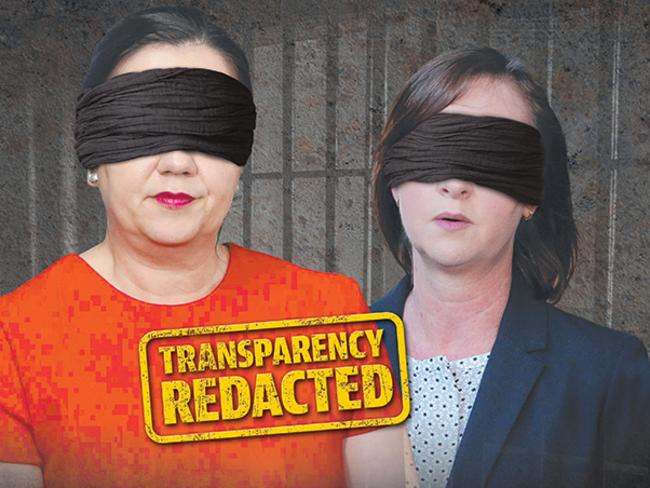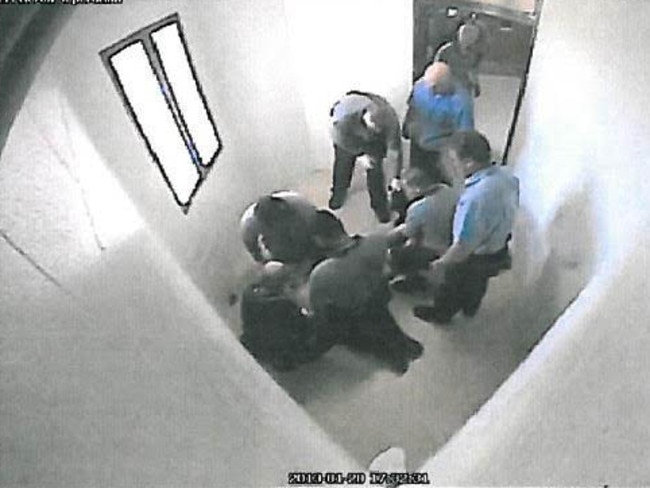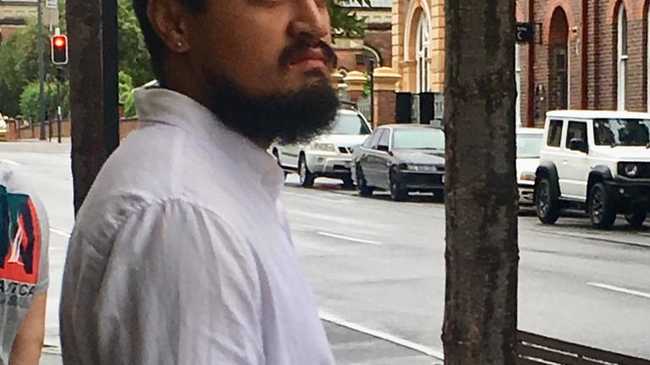Queensland Government censors report on youth detention abuses
UPDATE: Queensland’s Attorney-General has not denied youths in detention have been bound by the hands and feet, while refusing to discuss “distressing” images of restrained children redacted from a report.
Crime & Justice
Don't miss out on the headlines from Crime & Justice. Followed categories will be added to My News.
ATTORNEY-GENERAL Yvette D’Ath has refused to discuss “distressing” images of restrained children redacted from an official report into the state’s youth detention system.
Responding to revelations in The Courier-Mail that the Commission of Inquiry uncovered cases of binding by the hands and feet, Ms D’Ath said that practice was not allowed but did not deny it had happened.
“What the reviewers did is look at incidents in that point in time and make recommendations that we should make it absolutely clear that those practices that have been engaged in at different times should not and cannot occur under current legislation,” she said.
She said it was “distressing to see young people who are having to be restrained, who are having to be ground stabilised” , but refused to discuss what images and descriptions were contained within 245 redacted pages of the Independent Review of Youth Detention.
“I’m not going to talk about the photos that are in there,” she said.
“If I start talking about what’s in the photos it defeats the purpose of actually redacting them.”

Ms D’Ath blamed Crown Law for not releasing more than six chapters of the report.
“Crown Law was given the complete document of the reviewers and asked to provide myself with a document that could be released publicly in compliance with our legislative obligations,” she said.
She said she didn’t ask Crown Law if identifying information only could be blacked out to allow more information to be made public because it would be inappropriate to give them specific directions.
“As the first law officer, I can’t pick and choose when I decide to apply the law,” she said.
“At the end of the day, an accountable government is a government who doesn’t believe they’re above the law.
“We’re not above the law.
Queensland Premier Annastacia Palaszczuk said the Government would not be releasing the Crown Law advice it received about redacting the report.
She said the redactions were made to ensure the report did not breach the Youth Justice Act.
Crown Law is the body that provides legal services to the Queensland Government.
OVERNIGHT: The Queensland Government has been accused of covering up the hogtying of young offenders in custody.
The allegation came after the release of a 620-page report into Queensland youth detention, which contained 245 redacted pages that had included “confronting” pictures of the mistreatment of children.
The Courier-Mail understands a recommendation in the report to ban the binding of inmates’ hands and feet — one of 83 recommendations — followed new allegations of one or more young offenders being hogtied.
It came as the commission of inquiry found an apparent “reliance on the use of mechanical restraints”, but was unable to determine if there was systemic mistreatment because the Government didn’t give the commissioners enough time to do their job.
Sisters Inside chief executive Debbie Kilroy slammed the Government’s secrecy and called for the full report to be released.
“When we get to the recommendations, it talks about young people being hogtied,” Ms Kilroy said.
“We’ve seen no vision of hogtying. So what have they said to the commission and the review team? Is it one person hogtied or 20 young people? Who is being hogtied?”
Youth Advocacy Centre chairman Damien Atkinson backed the call for transparency.
“Somehow some public servant has decided we the public, who paid for the report, should be protected from seeing images of how children are treated,” he said.
“How is that a good thing?”
One of the terms of reference of the inquiry was to investigate revelations in The Courier-Mail last year that 17-year-old prisoner Jarrod Clayton was put in a mask and shackles and left alone in his cell in an adult prison in February 2013.
But the Government has redacted almost every reference to the incident.
It is believed the report recommends the Government apologise to Clayton, but a spokeswoman refused to comment.
After a similar incident in a Northern Territory youth detention centre was made public, Attorney-General Yvette D’Ath said that treatment was appalling and “spit hoods ... are not used in Queensland”.
The $500,000 independent Review of Youth Detention was formed in response to allegations of excessive force and tasked with finding whether the mistreatment of young Queenslanders in youth detention was systemic.
But the commissioners concluded they couldn’t properly do that job due to their three-month deadline.
Commissioners complained there was no time for hearings where up to 100 witnesses would have been called, not all documents could be read and the examination of individual incidents was limited to a small number.
But they found indicators of “concerning systemic mistreatment” in the use of force, mechanical restraints, separation and behaviour development plans, which appeared to be used regardless of the behaviour.
“The review is unable to conclude that there is no systemic mistreatment of young people in Queensland youth detention centres,” it said.
“There are a number of indicators that systemic mistreatment may exist in Queensland youth detention centres.”
Ms D’Ath announced $6.2 million to implement all 83 recommendations and hire 52 extra staff as she defended the three-month timeline, claiming the probe needed to be fast because of security risks.
She said young offenders felt emboldened to take on staff when claims of mistreatment were aired in the media.
“It was very important it be done in a short time frame because the more time there are people going into these centres and talking about these issues it makes it harder, it gets issues happening at the centres,” she said.
Report conclusions
● Unknown whether there is systemic mistreatment of young people due to limitations of the inquiry
● Apparent reliance on use of mechanical restraints in response to incidents
● Use of behaviour development plans appears to be punitive
● CCTV should record areas where use of force, violence, restraints or separation are known to have occurred and footage retained
● Security dogs should not be used in youth detention centres to respond to incidents
● Better rules around restraints are required, including specifically prohibiting their use to ‘hogtie’ a young person



